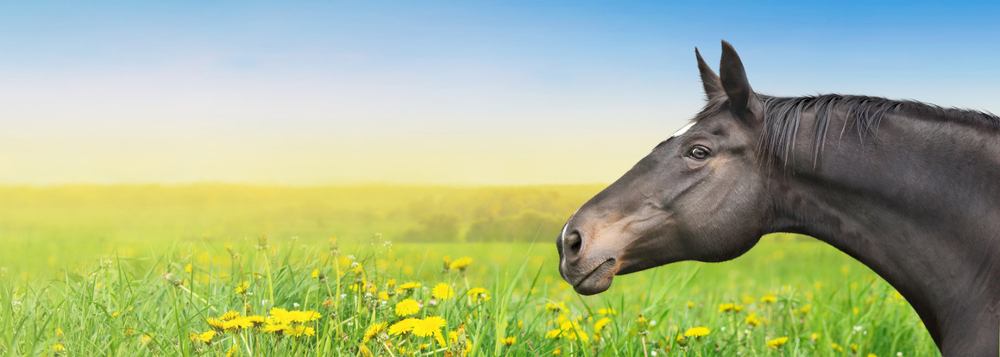24/07/2024
Help my horse is crazy
Source: landwirt.com
Unusual behaviors such as head banging, cribbing, or weaving are often caused by inappropriate horse handling. Don't let it get that far!
In the past, stereotypes such as cribbing and weaving were often described as vices. Prof. Anton Fürst of the University of Zurich's Department of Veterinary Surgery explains: "Stereotypes are actions that are repeated regularly, are fixed in their sequence down to the last detail, and appear pointless."
According to his experience, approximately 15 percent of all horses are affected. Such behavioral abnormalities are virtually nonexistent in the wild. They only appear in human care. Most horses suffer silently from poor housing conditions. Some develop behavioral disorders as an outlet for chronic stress caused by improper feeding and care.

Rule out diseases
Sometimes a horse's illness can be behind a stereotypy. Cribbing, for example, is sometimes caused by stomach or intestinal problems. There is also evidence of genetic influences. Cribbing itself is not considered hereditary, but sensitivity to stress is. When it comes to head-banging, health problems of the paranasal sinuses or spine, or even an allergy, should be considered. Head-banging is also often triggered by a light stimulus (sunlight).
Apart from that, behavioral abnormalities are generally not triggered by health problems or specific stimuli. If the veterinarian can rule out health problems as the cause, the housing conditions should be improved as much as possible.
Avoid stress and boredom
The majority of horses still spend most of their day in individual stalls. They are confined to very small spaces for many hours – twelve square meters is far too small for a flight animal in the long run. For fear of injury, many horses are only allowed out to pasture or run individually. Horses are runners and herd animals. They need contact with other horses and plenty of exercise. If contact with other horses is not possible, it can lead to sexual frustration, especially in stallions, according to Prof. Fürst.
Year-round outdoor housing in a group is ideal. When kept in stables, low partition walls facilitate social interaction with the "pen neighbors." Individual paddocks directly adjacent to the pens are also a positive feature. However, these paddocks are by no means a substitute for daily outdoor exercise with at least one other horse—this also applies during the winter months!
Feeding appropriately
Horses are continuous feeders and need long feeding times. Therefore, they need at least 1.5 kilograms of hay per 100 kilograms of body weight, spread throughout the day. Two feedings are often not enough. Special hay racks or hay nets can significantly extend the feeding time. Straw bedding allows horses to repeatedly "nibble" on it, which counteracts boredom and prevents excessively long feeding breaks. However, too much straw can cause constipation colic! Concentrated feed should, if necessary, be fed only in moderation and in several small portions. Feeding computers can be a great help.
Traumatic experiences
Traumatic events can also trigger behavioral problems. These include premature or abrupt weaning as a foal, premature or intensive training, long transports, or even changing stables. If a horse is kept in a species-appropriate manner and has to spend an extended period in a stable due to an illness, a behavioral disorder can suddenly arise.
Therapy difficult
Once horses have developed this kind of behavior, it is difficult to break them. Even a change to species-appropriate housing often has little effect. Other therapies are also unlikely to be successful and are controversial. This is particularly evident in the case of cribbing: cribbing straps cause horses pain, cause pressure sores, and increase the risk of strangulation by getting caught. As soon as the cribbing strap is removed, the behavioral problem recurs. Other options for "combating" cribbing include smearing the places where they can sit with deterrent substances or undergoing surgery. However, none of these measures solve the actual problem; they simply deprive the horse of its "stress relief valve."
Impairment
Behavioral abnormalities can significantly reduce a horse's value, potentially even making it unsellable (100% loss of value, table). The actual extent of the loss of value in each individual case should be assessed individually by an experienced appraiser.
The most common behavioral problems in horses
Koppen
By tensing the lower neck muscles, cribbing causes air to flow into the esophagus (cribbing sound). Horses usually do this by placing their upper teeth on an object (placed cribbing), although some horses can cribbing without using any object (free cribbing). Cribbing helps horses relieve stress because it releases endorphins. Cribbing horses have strongly developed lower neck muscles, which can make it difficult to turn and ride forwards and downwards. It is very rare for horses to copy cribbing from other horses.
Weave
When weaving, the horse stands in place and repeatedly rocks its head and shoulders back and forth. At the same time, the body weight is shifted from one front leg to the other. Excessive weaving can cause damage to the forelimbs, as they are overloaded by the monotonous movement.
Pit running
When horses constantly pace back and forth or in circles in their stall, this is called stall pacing. Like weaving, the horse tries to satisfy its need for exercise by pacing. Some horses also exhibit this behavior in the paddock or pasture.
head banging
Repeated jerky movements of the head from up to down or sideways without any apparent external cause ("imaginary flying") are considered a behavioral abnormality. Horses that exhibit head bouncing under saddle are often no longer rideable.
Knock
Knocking against the stall wall. Knocking usually first occurs during feeding times. Because the horse receives food afterward (a reward!), the problem usually worsens. Possible consequences include leg disorders such as pee-pee-pee.
Automutilation
This behavioral disorder is most commonly observed in stallions. The horses bite their flanks, forearms, or chests. Caution is advised to prevent these wounds from becoming infected.
You can find all products on this topic here: Horse keeping, equestrian sports!
